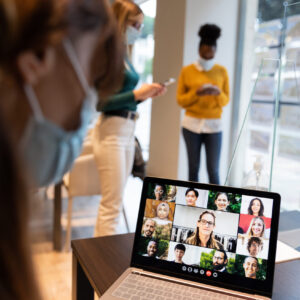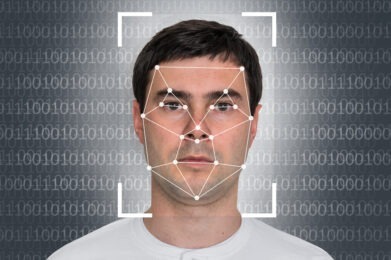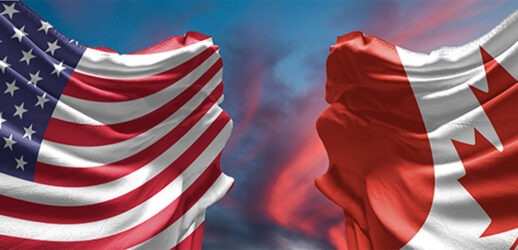Future hospitality trends identified
As they rang in 2021, meeting professionals were full of hope. A distant light teased through the haze after a buffeting year that dumped every manner of physical, economic and emotional wreckage in rapid succession. Whatever came next had to be better compared to the cataclysmic ride they had just lived through. Right? In January, Smart Meetings called on experts to help us make out the shapes of what awaited on the other side of the pandemic void.
“A more equitable, sustainable, flexible ‘new normal,’” they declared. “A blended physical and virtual experience” others shouted from the event-tech crow’s nest. One sharp-eyed spotter prescribed Minecraft-ification of the meetings experience to combat chronic laptop fatigue (thank you, Will Curran).
Whole countries are still waiting for clouds to part after new virus spikes crushed travel plans. For the rest of us, rubbing our Covid-shot arms and squinting in the light from reopened convention centers, a clearer picture of this awkward transition phase is taking form.
That’s why we decided a second opinion at midyear was in order. We asked Michael Tchong, author of Ubertrends and founder of an innovation incubator, what we should expect and how we can prepare for what comes next.
His first piece of advice? Don’t get too attached to the status quo. “Trends will start coming at ever faster rates,” he warns. Three years of development was compressed into 12 months. Everyone from kindergartners to residents of assisted-living facilities is now clicking into streaming meetings, even if the intensity of staring at ourselves for hours on end is ultimately fatiguing.
The convenience of ordering anything to be delivered to our doors—from a burger and fries to detergent and a new car—will not be abandoned when it is no longer surgeon general-advised. On the upside, three vaccines were developed in one year when in the past the same breakthrough took 40 years. Now the challenge is getting enough people to roll up their sleeves around the world.
Even in the meetings space, adoption of new methods of delivering content has been compressed. Meeting professionals who resisted streaming as a threat to their control and/or revenue are finding that the data insights, increased reach and ability to enhance their marketing pipeline almost make learning the tricks of keeping everyone engaged worthwhile.
Savvy innovators who anticipate the disruptions will be the big winners, predicts Tchong, who founded MacWEEK in 1987. He points to Eric Yuan, the founder, chairman and CEO of Zoom Video Communications. The origin story goes that, in his 20s, the Chinese-born computer programmer was inspired by a 1995 Bill Gates keynote about the power of the internet. After nine applications for a visa to come to California’s Silicon Valley, he landed a job at the videoconferencing software company WebEx (which was eventually bought out by Cisco). In 2011, he set out to compete not only with his former employer, but also Microsoft’s Skype and Google Workspace by “delivering happiness and bringing teams together in a frictionless video environment,” according to an April Entrepreneur article.
His focus was on building a user-friendly product and delivering extreme customer care. A decade and a pandemic later, Zoom serves some 300 million daily meeting participants (compared to 10 million in 2019) and is worth $85.3 billion. This determined immigrant is now worth $13.3 billion, according to Forbes, and his product is a verb.
Zoom, zoom, zoom.
Like Steve Jobs, Yuan was not the first to market with a product, but he did a better job of making the mouse trap easy to use, Tchong explains. That will be even more important as the world scrambles to adapt to all the changes ahead.
Tchong describes the near future as “a mishmash.” Although many companies have found that working from home may be more productive without the bottleneck at the water cooler, studies show that employees miss the interaction. “There is a pent-up demand for socialization,” he says. He also warns that an uneven return to the office could create more divides between those who have regular face time with executives and those who dial in from remote locations.
Unified teams could be essential to deal with all the trends sweeping the meetings industry this year. As in the 1985 Michael J. Fox movie, sometimes looking back is the straightest path to the future. So, we examined the last six months and pulled out the 25 changes that could require innovative thinking to put you on the right side of the new change order.
 25. Hands Free-for-all
25. Hands Free-for-all
The low down: After a contagion-conscious year, everything from doors and registration to greetings and bathroom soap have been reengineered to be touchless. Once the pandemic is officially labelled over, our experts predict these practices will continue. Why? Because most are both hygienic and convenient.
The to-do: Ditch the badge queue for home printing, programs on apps and smartphone-controlled presentation equipment.
24. Infinity Masks
The low down: Another trend that could extend beyond the “all clear” call is public masking. TSA has announced that face coverings will be required at airports and on trains at least through September 13. Yet when you consider that the SARS outbreak of 2002 led many in China to continue wearing protective masks for decades afterwards—and that it’s been demonstrated that infection from viruses other than Covid-19 were diminished due to the practice—many may choose to continue the fashion statement.
The to-do: Be clear in communications about what will be required at your events and consider branded mask gifting. Pro-tip: Don’t skimp on the masks, make sure they can be fitted to the face and can filter out small particles.
23. Sanitation Theater
The low down: Hotel and venue cleaning that previously happened in the middle of the night and behind the scenes is now front and center, marked with a sticker on the door and celebrated in signage. The disinfection is important for keeping surfaces clean regardless of pandemic status, but the reassuring effect for attendees who might be hesitant is particularly important right now.
The to-do: Share in advance what steps are being taken by your staff and the venue to create a healthy environment.
22. Sanctuary Seating
The low down: CORT Event Furnishing’s David Fritz calls comfortable “sanctuary seating” the warm alternative to straight-back chairs in a grid that look like “adult time out.” Meeting professionals may struggle for the foreseeable future with putting everyone at ease without allowing attendees to let their guard down.
The to-do: Setting a meeting with small group pods so it looks like a living room can facilitate conversation while maintaining six- or three-foot distances.
 21. Al Fresco Events
21. Al Fresco Events
The low down: Since the beginning of time, mothers have been telling us to go outside and play, doctors have recommended the sun’s natural vitamin D and now no less a personage than Dr. Fauci himself reminds us the risk of contracting Covid-19 outside is much less than indoors. Outdoor patios, parking lots that can be converted into parklets, and ubiquitous rooftop pool decks are the new hot spots for getting business done outside.
The to-do: Veteran meeting professionals know that outdoor locations offer creative possibilities and bring their own challenges. Keep a solid indoor back-up plan for bad weather, umbrellas and heaters for marginal temps and an eye on the horizon, just in case.
20. Health Wallets
The low down: Requiring proof of negative Covid-19 tests or vaccination through a vaccine passport app (an extension of vaccination records for diseases such as typhoid fever and hepatitis that have long been required to travel to certain countries) has been suggested as a possible way to ensure everyone at an event is healthy. But the idea turned controversial as some states have banned their use while others are pointing to the measure as the only way large events can go forward. World Health Organization warns against limiting participation in activities when not everyone has equal access to vaccines.
The to-do: American Express Global Business Travel notes that a consistent, interoperable technology has not yet been established in a way that protects sensitive data to cover all airlines and countries that might require vax proof. Medical information is not something you want on an Excel spreadsheet in your laptop. Take the proverbial temperature of your group to see what measures would balance safety, privacy and access concerns before making a decision and then find a technology partner to implement.
 19. Comfort Food
19. Comfort Food
The low down: The self-serve buffet may have gone the way of the dodo bird and staffing challenges (see trend 12) could make served and manned stations prohibitive, but that doesn’t mean attendees will be relegated to brown boxes with plastic-wrapped sandwiches and cookies. Mary Cline, regional director with Wolfgang Puck Catering, suggests focusing on nostalgic food that warms the soul while packaging meals creatively with compostable disposables or utensils made from recyclable materials.
The to-do: Work with chefs at your venues to source ethical, local ingredients to develop functional food menus that energize while boosting immunity and mood. Think kombucha, botanical and citrus teas.
18. Well-being
The low down: Meeting professionals today are being asked to cater to the physical, mental and environmental health of attendees. As everyone resumes traveling again, this is an opportunity to be more intentional about making time in the agenda for healthy experiences. Since socializing naturally releases the neuropeptide oxytocin (the love hormone), the to-do item could be as simple as making more time for meaningful human contact (something F2F meetings excel at providing) and time out to process all those feelings.
The to-do: Take your cue from traditional medicine’s focus on a balance of mind, body and spirit to allow natural defense mechanisms as a systemic whole to ward off threats from inside and out.
17. Regenerative Travel
The low down: “Do no harm” may not be enough in a post-Covid world. When the seatbelt sign blinks off and we are safe to move about the world again, we will do so knowing our duty is to leave places we visit better than when we arrived. That beyond-sustainable mandate has been embraced by IMEX Group, which launched Nature of Space with Marriott International to provide practical tips for connecting with nature, and Financial & Insurance Conference Professionals (FICP), which suggests including environmental requirements in RFPs to make Earth a priority for all parties.
The to-do: Get attendees involved in the effort to give back by incorporating earth-friendly activities such as beach clean-ups and food donations in the agenda.
 16. Omnichannel Opportunities
16. Omnichannel Opportunities
The low down: We have all heard that “the future is hybrid.” But what if the next few years are a mix of streamed meetings, on- going conversations punctuated by webinars, and regional hub watch-and-discuss gatherings, plus annual events that cycle tracks of attendees in and out over a series of days or weeks with shared content on-demand? In other words, what if meeting professionals use their entire arsenal of content-delivery channels based on what is most effective for specific goals, not just because it has always been done that way?
The to-do: Take a page from the playbook of Timothy Simpson, brand and engagement chief strategist with Design Studio by Maritz Global Events. Start with the needs of the people involved, then back into process, strategy, policy and, finally, pick the technology that best delivers the results you need. Spoiler alert: This may require bringing some people together in person at some point.
15. Exponential Reach
The low down: One of the silver linings discovered by many who “pivoted to virtual” (or as we like to say, pirouetted to innovation) was that the size of their audiences ballooned. Webinars that previously drew hundreds were scrambling to accommodate thousands. Annual conferences that brought 3,000 to a ballroom were testing server sizes with tens of thousands logging in to check it out (and quickly jumping off if it didn’t hold their attention). As PCMA proved more than a decade ago, the at-home audience is not cannibalizing your in-person attendance: It is expanding the warm marketing funnel of people who will experience FOMO and want to be there in person when they can—all the while distributing your valuable content more efficiently.
The to-do: The time for giving away virtual content for free is over. Once you demonstrate you are delivering valuable content, you will open up multiple revenue streams, in the confident assessment of Dahlia El Gazzar, founder of Dahlia+ Agency.
14. Simulive Learning
The low down: When speakers prerecord their stand-and-deliver monologue and then try to replicate their hair and shirt so they can come back the day of the event and seamlessly answer questions, that is “simulive.”
The to-do: Rohit Bhargava, author of Non-Obvious Megatrends, suggests honoring the shift to “instant knowledge”—consuming bite-sized info on-demand—and offering education in tightly packaged modules that can be used as conversation starters or post-conference reference materials.
13. Age of the Digital Producer
The low down: All those digital meetings aren’t going to stream themselves. We learned over the last year that pivoting to Superbowl-quality virtual is not free, and the skill set required to produce an engaging, high-quality event requires talents not normally found in the ballroom. That’s why event teams are going back for training and certifications like PCMA’s Digital Event Strategist program or hiring someone who can put all the pieces together.
The to-do: A trick Carl Winston, director of San Diego State University’s L. Robert Payne School of Hospitality & Tourism Management, suggests is working with theater and television production folks to cross-train in the strategic approach to meeting design and the technical requirements of production tactics.
12. Employee Drought
The low down: It turns out hiring back thousands of hotel employees is even more difficult than laying them off. As the roles of bartender and housekeeper are left vacant in some areas for a lot of complex reasons, meeting professionals are finding creative ways to ensure those buffets will be manned and womanned. Temp services such as GES Flex Talent Pool offer protocol-trained staff for those peak events during a time when conferences may not provide the full-time employment they did in 2019.
The to-do: Greg DeShields, executive director with Tourism Diversity Matters, suggests looking at this time as an opportunity to build back better by casting a wider net when it comes to vetting suppliers and applicants.
 11. Everyday VR
11. Everyday VR
The low down: Virtual reality and augmented reality may finally move from sideshow status to center stage as virtual events look for ways to host shared hybrid experiences with immersive 3D environments and avatar-based events.
The to-do: Try starting with virtual site visits, which can save time, money and the planet (see trend 17) and allow you to consider a longer list of potential venues before winnowing down to your short list.
10. Door-to-door Gifting
The low down: Meeting profs learned a host of skills during the lockdown. Many became logistics mavens, planning and shipping creative swag, happy hour supplies and props for team Zoom calls. Laurie Amigo, corporate branding director with Halo Solutions, praises the power of a well-designed and branded gift box to up the energy level on the Zoom.
 The to-do: Sourcing from socially and environmentally responsible companies such as Packed with Purpose communicates that you care for the recipient and the planet (yep, we are referring back to that popular trend No. 17 again).
The to-do: Sourcing from socially and environmentally responsible companies such as Packed with Purpose communicates that you care for the recipient and the planet (yep, we are referring back to that popular trend No. 17 again).
9. Event Austerity
The low down: Even before the pandemic, the Incentive Travel Industry Index published by SITE, IRF and FICP found that event professionals were facing stagnant or shrinking budgets with expanding expectations—think driving sales, building company culture, and uniting merged management teams. Now that travel companies and others hit by the Covidpocalypse are nursing diminished reserves, many in the experience motivation space could be tasked with counting pennies even more carefully.
The to-do: Leveraging those new digital content delivery skills to focus on the key deliverables and VIP audiences could be the path to that elusive “do more with less” mandate.
8. Force Majeure on Steroids
The low down: The last year sent many meeting profs scrambling to trigger their “act of God” clauses to cancel, postpone—and, in some cases, postpone again—reservations for room blocks and meeting spaces.
The to-do: John Foster, partner attorney at Foster, Jensen & Gulley, says contracts going forward will now have to include even more exacting legal language—he estimates that a thorough “ability to terminate” clause can fill at least a page—to cover all possible future scenarios.
 7. All Secure
7. All Secure
The low down: Security used to refer to protection from criminals, then the threat was from mass shooters, now meeting profs are tasked with providing environments free from contagion and secure for digital data. That can take the form of health surveys, Covid-19 testing, temperature checks and mask enforcement.
The to-do: Mike Dominguez, CEO of ALHI and chair of EIC’s APEX Covid-19 Business Recovery Task Force, stresses the importance of enacting a “code of conduct” and having attendees take responsibility for their role in taking precautionary measures over their entire meeting journey.
6. Certified Safe
The low down: From Global Biorisk Advisory Council (GBAC) STAR accreditation at convention centers, airports and even cities to each hotel brand’s cleanliness stamp of approval—Marriott Commitment to Clean, Hilton EventReady with CleanStay, Hyatt Global Care & Cleanliness Commitment, Omni Safe & Clean—venues are stepping up to partner with meeting profs to ensure protocols are met.
The to-do: Local CVBs, DMCs and venues know the situation on the ground best. Rely on them to understand what will be required and what resources are available locally.
 5. Cybercurency Wars
5. Cybercurency Wars
The low down: Cryptocurrencies such as Bitcoin, Ethereum and Dogecoin are now being accepted at some hotels and restaurants. Event booking platform Expedia allows digital currency for flights, accommodations and car rentals.
The to-do: This would be an instance where you know your group and its preferences best.
4. Engagement Is the New Experience
The low down: One of the biggest challenges with the shift to online meetings has been keeping everyone’s attention long enough. Where we used to struggle with delivering wow, now we are focused on distracting them from the “leave meeting” button.
The to-do: Jason Thomson, events content and creative director behind Instant Fix, says while shorter is undeniably better, focus on the benefit for the audience (rather than the presenter) and use personal storytelling. Then, he says, you can hold eyeballs long enough to change lives.
3. The Certainty of Unpredictability
The low down: Now that hyperspeed trends are sideswiping the industry at accelerating velocities, meeting professionals and their audiences are becoming slower on the draw. Registering a week, days or hours in advance of a virtual meetings is now commonplace, according to Howard Givner, executive director of Event Leadership Institute. Today, planners often have to estimate attendance based on intuition—after the gap year, previous events’ numbers don’t always track.
The to-do: As our event tech correspondent Brandt Krueger suggests, you need Plan A through F, and all have to be just as robust as the one that comes before. It may be time to cede that we can’t control everything.
2. A United Voice
The low down: One thing the hospitality and travel industry quickly learned is that although live events comprise one of the most powerful engines in the world for business, research and social change, the players are so fragmented that advocating for recognition of their pain was difficult when theater and convention center doors closed. “We have to be the squeaky wheel,” says Nancy Shaffer, board president for Live Events Coalition.
The to-do: Get involved with associations, follow Meetings Mean Business and U.S. Travel and be ready to tell the story of the essential role meetings play in the global economy to anyone who will listen.
 1. Giving Grace
1. Giving Grace
The low down: Let’s be honest. The last year was hard. The uncertainty, the lost jobs, the fear of catching a deadly disease, the barrage of gut-wrenching headlines…
The to-do: Now is the time to allow ourselves to grieve briefly for what we have lost, giving grace to those around us who experienced all of it in their own way. Then we take those painfully learned lessons on this list, and we reinvent an industry that delivers the best freaking experiences ever!





